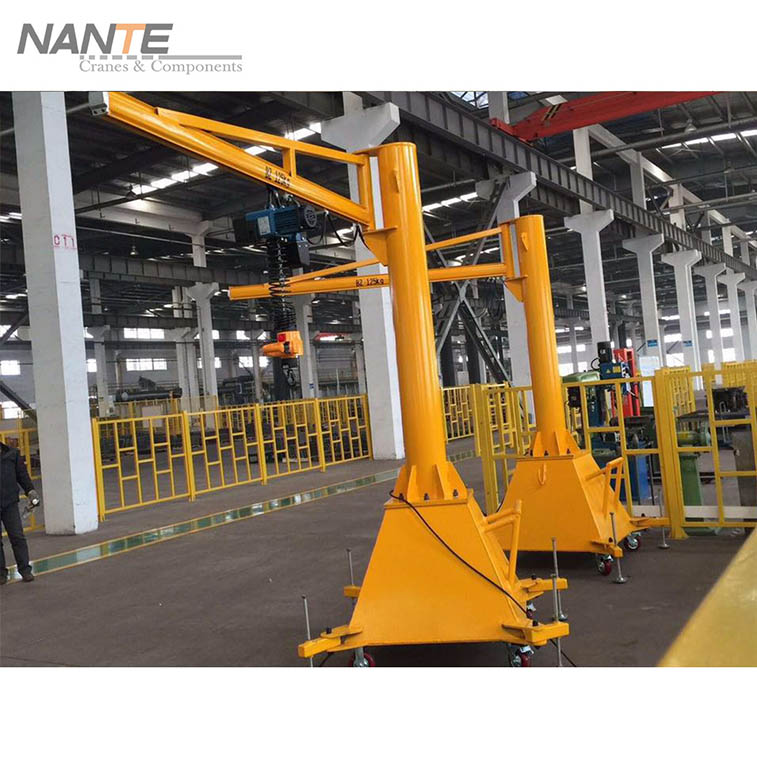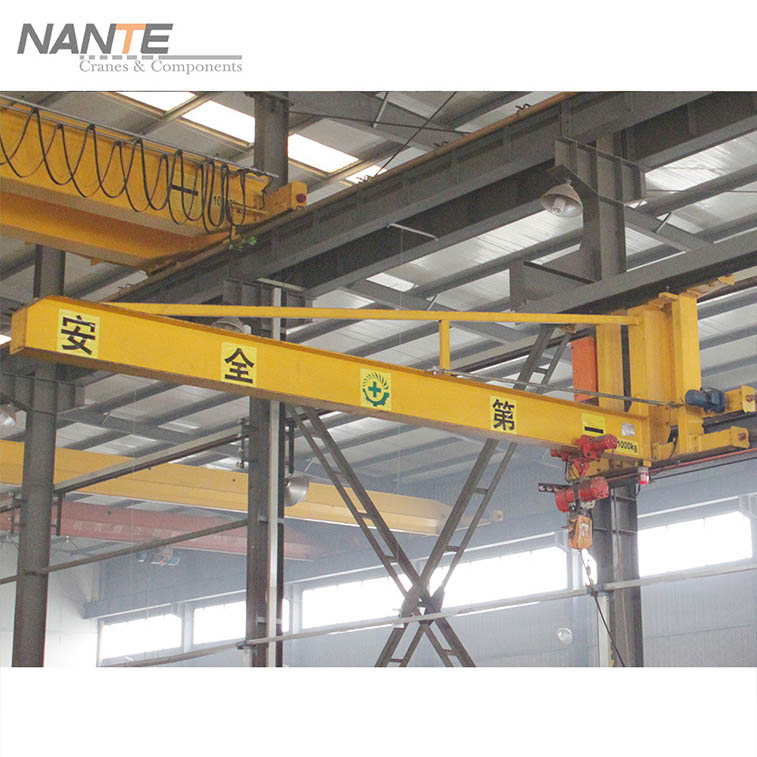What Is a Jib Used for?
Date: 2024-04-05 Share:
Jib cranes, as an important lifting equipment, play a pivotal role in industrial production. What is a jib used for? In this article, we will take a closer look at the uses of jib cranes and their applications in different fields, thus revealing their value.
Uses of jib cranes
First, the primary application of jib cranes lies in facilitating the hoisting and maneuvering of heavy goods. Within industrial production settings, there is frequently a requirement to transport and position diverse materials, components or equipment – a task that makes jib cranes an essential mechanism for operations. Owing to its distinctive structural design, jib cranes can lift and transition weighty objects from one locality to another efficiently whilst maintaining precision within handling operations.
Jib cranes are also used to improve productivity. Traditional handling methods often require a lot of labor and time, while the introduction of jib cranes greatly reduces the labor intensity of workers, while improving operational efficiency. With jib cranes, workers can complete lifting tasks more easily, leaving more time for other important tasks. In addition, the precision of jib cranes ensures quality and stability during the production process, which helps to improve the product qualification rate.

Flexibility of jib cranes in different areas
The application of jib cranes varies in different areas of industrial production. In the field of machinery manufacturing, jib cranes are often used for lifting and assembling large workpieces. These workpieces are often so large and heavy that they need to be moved easily by the power of the jib crane. In the chemical and metallurgical industries, jib cranes are used for the transportation of various raw materials, finished products and equipment to ensure the smooth operation of production lines. In addition, in the power, shipbuilding, construction and other fields, jib cranes also play an important role, for a variety of large-scale projects to provide strong support.
The application of jib cranes is also reflected in their flexibility and customizability. Different industrial production environments have different needs for jib cranes, so the design of jib cranes also needs to have a certain degree of flexibility. Some cantilever cranes can be fixed to workshop columns or walls to fit into fixed work environments, while others can be moved to allow for flexible switching between multiple work points. In addition, parameters such as load capacity, lifting height and cantilever length can be customized to meet the specific needs of different customers.
The application of jib cranes is also inseparable from their safety. In the production process, safety always comes first. As professional lifting equipment, jib cranes are designed and manufactured in strict compliance with safety standards to ensure that no damage is caused to personnel or equipment in the process of use. At the same time, the operation of jib cranes is also relatively simple, after professional training workers can master its use, further reducing the safety risk.
The continuous development of jib cranes
With the progress of science and technology and industrial development, the use of jib cranes is also expanding. Modern jib cranes are no longer limited to simple lifting and handling operations, but are developing in the direction of intelligence and automation. Some advanced jib cranes are equipped with sensors, control systems and other intelligent equipment, which can realize more accurate and efficient operations. At the same time, jib cranes can also be linked with other production equipment to realize the automation and intelligent management of production lines.
In addition, with the growing awareness of environmental protection, the environmental performance of jib cranes has also become a focus of attention. Some advanced jib cranes have adopted energy saving, emission reduction and other environmental protection technologies to reduce the impact on the environment. In the future, with the continuous improvement of environmental protection laws and regulations and the continuous progress of environmental protection technology, the environmental performance of jib cranes will be further enhanced, providing strong support for the green development of industrial production.
In short, the jib crane as an important lifting equipment, in industrial production plays an irreplaceable role. Its wide range of uses, not only for the realization of heavy lifting and handling, improve production efficiency, but also according to the actual needs of customization and flexible application. At the same time, the safety and intelligent development of jib cranes also brings broader application prospects. In the future, with the progress of science and technology and the continuous development of industry, jib cranes will continue to play an important role in providing more efficient, safe and intelligent support for industrial production.
Nantes can design and manufacture a wide range of jib cranes, including self-supporting jib cranes, mobile jib cranes, wall-mounted jib cranes and wall-traveling jib cranes, to meet the needs of different customers. Nante’s jib cranes are characterized by flexibility, durability and easy installation and removal. Feel free to contact us for any questions about Nante’s jib cranes!

Precautions in the application of jib cranes
Although jib cranes are widely used and important, in the process of use still need to pay attention to some problems. First of all, the selection of jib cranes should be based on the actual operating environment and demand for reasonable matching, to ensure that it can give full play to its role. Secondly, the installation and maintenance of jib cranes also need to follow professional norms to ensure that they always maintain a good running state in the process of use. In addition, for the operation of the jib crane workers, also need to carry out professional training and assessment, to ensure that they can skillfully and accurately operate the equipment, to avoid accidents.
Summarize
In conclusion, jib cranes hold a paramount position within the industrial production sphere due to their prevalent use and absolute necessity. Projecting into future developments, they will maintain their pivotal role, with ongoing optimization and progressive technology enhancements tailored to meet fluctuating market demands and environmental protection stipulations. Simultaneously, we must remain cognizant of aspects such as selecting an appropriate crane model specific to our tasks at hand, executing proper installation procedures, regular maintenance upkeep schedules and optimal usage practices. This serves to ensure that jib cranes can continue providing safe and efficient service within industrial production.
 English
English






